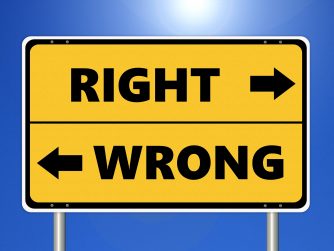
It’s Thursday and each Thursday I want to share with you some thinkers and what they have to say. Topics include Google, change management, corporate culture, Phil Robertson, education, Occupy Wall Street, and the atonement.
Business and Leadership
- How Google Sold Its Engineers on Management by David A. Garvin. Google faced a tough challenge. If your highly skilled, handpicked hires don’t value management, how can you run the place effectively? How do you turn doubters into believers, persuading them to spend time managing others? This is an interesting article and video on change within Google. I would not make this descriptive, because of the kind of company Google is. However, in some highly analytical organizations, this approach has merit, as demonstrated by its effect on one of the largest companies, in terms of influence and market valuation, in the world.
- There’s No Such Thing as a Culture Turnaround by Jon R. Katzenbach. It’s almost impossible to change a corporation’s culture. But it is possible to leverage parts of existing culture to move the business forward. The key? Target a few behaviors that will immediately energize the elements of your culture that are critical to moving your business forward. It is surprising how rapidly you can revitalize existing cultural traits if you concentrate on the right behaviors. Though it takes a bit of time and patience, viral spreading among informal leaders is a lot faster than programmatic spreading through redesign.
Culture
- Why Most Rich 1 Percenters Would Give Anything To Be Among The 99% : If you believe that someone else is better off than you are, you will be willing (indeed, eager) to trade what you have for what they have. Let’s see if the “Occupy” protesters really believe what they had spray-painted on their cardboard signs. Louis Woodhill postulates on why the 1% would really rather be a part of the 99%. He tackles the concept of income inequality, showing the changes that occurred in the United States that produced the disparity in income inequality.
- The art of struggle by Laura Vanderkam. In the 9th grade English class I visited at Mastery Charter’s Shoemaker campus, one attempt to get at this is “structured struggle.” As a regular exercise, students get excerpts from challenging texts with little by way of introduction or explanation. They learn to mark up what they do understand on one side, and questions they have on the other. They hash out with a partner a short summary of what happened in the excerpt. Mastery, a charter school network in Philadelphia that has revitalized some of the area’s worst performing schools, has learned to move past discipline and grade level test scores to get at deeper questions of how we learn and how we can keep learning as we start to perform on larger stages. This is not only a good reminder of the power of struggle, but insight into a system that can help revitalize creative learning and under-performing schools.
- Are there any LGBT community members who support free speech? by Marty Duren. A&E Networks suspended Phil Robertson, of Duck Dynasty, from the reality show about the life of his family and the duck calls he created. The reason? He expressed his religious views about homosexuality in an interview with GQ magazine. Marty wonders if anyone in the LGBT community believes in free speech, or just those who believe as they do? He also notes the irony of a company who makes a boat-load of money off of free speech (and the head of the family of the highest rated cable show in history) suspending someone who exercises his free speech rights.
Faith
- For the Earliest Christians, the Cross was Central by Scot McKnight. Mike Bird is right, then, when he says “the first Christians preached, remembered, and ordered their lives around the story of the cross” (Evangelical Theology, 385). But how to understand that cross? How to understand atonement theology? McKnight looks at Bird’s contention that Christus Victor is the central theme of the Cross. This has been my thinking for some time.
- Mega-church attendance vs. House Church attendance by Neil Cole. What is the percentage of people who attend a mega-church in the US? How does that compare with the percentage who worship in a house church? You would be surprised at the numbers.







